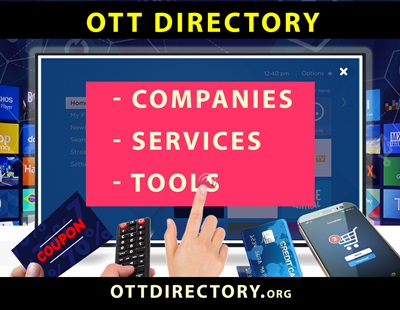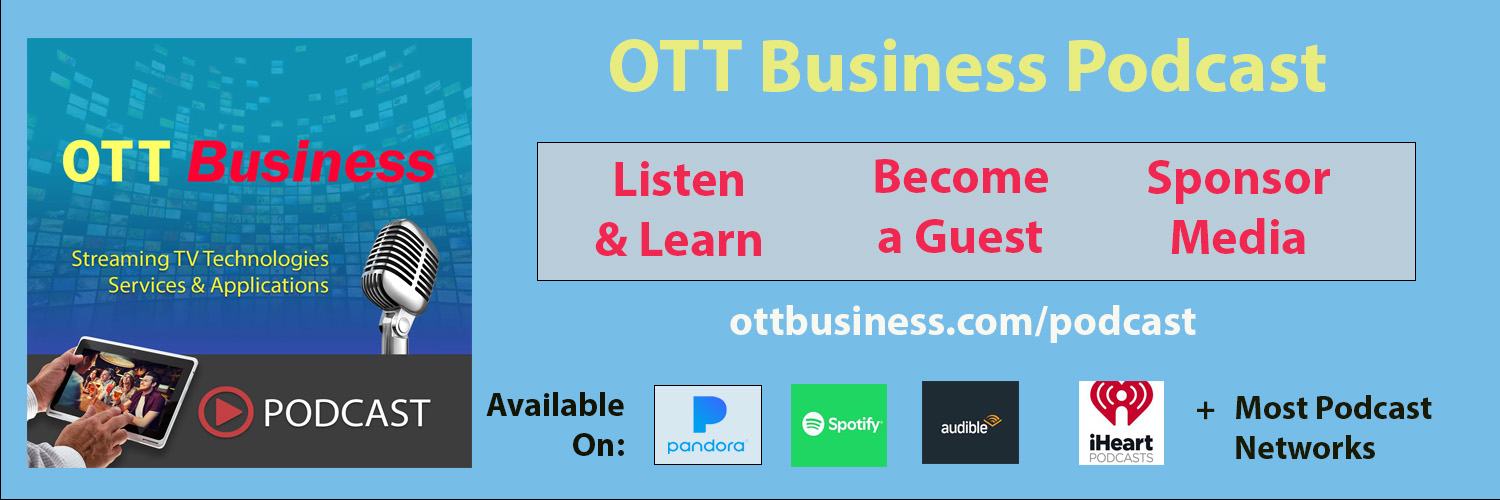Live remote video streaming platforms, tools and services allow producers, talent and crew to work together to setup, record and publish media from different locations connected through the Internet. Remote video production for OTT platforms addresses the challenge of producing high-quality content remotely while maintaining collaboration and efficiency. This solution tackles key issues such as seamless real-time collaboration, secure media storage, and robust backup systems. It features high-definition video and audio capture, integrated editing and post-production tools, real-time analytics for performance monitoring, and secure cloud-based storage with version control. Additionally, it offers remote camera control, live streaming capabilities to multiple platforms, and a user-friendly interface to simplify operations. By providing scalable and flexible infrastructure along with stringent security measures, this solution ensures that OTT productions can meet professional standards from anywhere.
Live Streaming Platform Companies

Live Remote Streaming Platforms List
GlobalM – GlobalM provides advanced video transport and remote production solutions for the OTT and streaming TV industry for distribution, live streaming, and real-time broadcasting of video content across multiple platforms.
Livestream
Norsk – Norsk provides real-time video processing solutions that enable OTT and streaming TV platforms to deliver high-performance, low-latency video content to large audiences over the Internet.
Live Remote Streaming Platform Key Features and Capabilities
Adaptive Bitrate Streaming (ABR)
The system should adjust video quality based on the viewer’s internet speed to ensure smooth streaming and avoid buffering for users with slower connections. This feature is important because it ensures a seamless viewing experience for all users, regardless of their network conditions, enhancing audience satisfaction and retention.
Cloud-Based Production
A system that allows video production and editing directly in the cloud, reducing the need for on-premises hardware and enabling greater flexibility in managing live streams from remote locations. Cloud-based production is crucial because it streamlines operations, reduces costs, and allows production teams to collaborate from anywhere with an internet connection.
Content Management Integration
Seamless integration with content management systems (CMS) for efficient post-production workflows, metadata tagging, and content organization. This is important because it simplifies the management of recorded live streams, ensuring that content can be easily edited, categorized, and repurposed for future use.
Data Analytics and Viewer Insights
Real-time analytics on audience engagement, viewership numbers, and geographical breakdowns help producers gauge the success of their live stream and optimize future events. This feature is critical for understanding audience behavior, improving content strategy, and making data-driven decisions for future live broadcasts.
Graphics and Overlays
Support for adding live graphics, lower-thirds, and other on-screen overlays to enhance live broadcasts with important information or branding elements. This feature is important for providing real-time information, maintaining brand consistency, and improving viewer engagement during the live event.
Integration with Social Media and OTT Platforms
The system should allow direct streaming to social media channels (e.g., YouTube, Facebook Live) and OTT platforms, enabling broader distribution and maximizing audience reach. This is important because it allows producers to reach larger and more diverse audiences through multiple distribution channels, increasing the visibility and impact of live broadcasts.
Low Latency Streaming
The ability to broadcast live content with minimal delay is critical for delivering a real-time experience, particularly for interactive broadcasts and live events. Low latency streaming is essential for maintaining audience engagement, especially in scenarios that require immediate feedback or interaction, such as live Q&As or gaming streams.
Media Feed Formats
The ability to select, receive, and process feeds from multiple sources and in multiple streaming and stored media formats. This feature is crucial because it provides flexibility in content acquisition, enabling the platform to handle various media inputs and ensuring compatibility with different devices and broadcasting setups.
Multi-Camera Support
The ability to stream and switch between multiple camera feeds, enabling dynamic and high-quality live productions from different angles and locations. Multi-camera support is important because it enhances the production quality of live events, creating more engaging and professional-looking broadcasts.
Multi-Language and Closed Captioning Support
For accessibility and international reach, the system should support closed captioning and simultaneous multi-language streams, allowing for real-time translation. This feature is critical for reaching global audiences and ensuring inclusivity for viewers who are deaf or hard of hearing.
Real-Time Collaboration
The system should allow remote teams to work together seamlessly during live broadcasts, offering communication tools such as live chat, video conferencing, and shared document management to coordinate production efficiently. Real-time collaboration is essential for ensuring smooth operations, especially when production teams are dispersed across different locations.
Recording and Replay Options
The ability to record live streams for future playback, re-broadcasting, or repurposing the content for on-demand streaming. This feature is important because it extends the value of live events by allowing them to be reused, providing additional opportunities for engagement and monetization.
Redundancy and Failover Systems
The platform should offer backup streaming options or automatic failovers to ensure minimal downtime in case of technical issues or interruptions. Redundancy is vital for ensuring the reliability of live broadcasts, preventing disruptions that could result in audience drop-off or brand damage.
Remote Camera Control
Capability to manage camera settings remotely, including pan, tilt, zoom, and focus, for complete control of remote camera operations without on-site staff. This feature is important because it reduces the need for on-location personnel, making live production more flexible and cost-efficient.
Scalability
Ensure the platform can handle varying audience sizes, from small niche events to large-scale productions with potentially millions of viewers, and adapt to bandwidth and quality needs accordingly. Scalability is crucial for handling the unpredictable nature of audience sizes during live events, ensuring smooth performance no matter the viewership scale.
Video and Audio Quality Controls
Advanced options for managing video resolutions (HD, 4K) and ensuring high-quality audio synchronization with minimal disruptions. This feature is essential for delivering a professional-grade broadcast experience, ensuring that both video and audio maintain a high standard of quality throughout the live event.
Live Remote Streaming Platforms Glossary
Adaptive Bitrate Streaming (ABR) – A streaming technology that adjusts the video quality in real time based on the viewer’s internet connection, ensuring smooth playback even under varying bandwidth conditions.
Audio Return Channel (ARC) – A feature that allows audio to be sent from a television or display back to a live streaming production system, enabling two-way audio communication without extra cables, which is useful in remote production setups.
Bandwidth Adaptive Streaming (BAS) – A technology that adjusts the amount of data transmitted during a live stream based on the viewer’s available internet bandwidth, ensuring uninterrupted streaming even with fluctuating connection speeds.
Cloud-Based Production – A method of video production that allows media creation and editing to occur remotely using cloud infrastructure, reducing the need for physical hardware and enabling flexibility in live streaming.
Closed Captioning (CC) – Text displayed on the screen that provides a transcription of the spoken audio, enabling accessibility for deaf or hard-of-hearing viewers and supporting multiple language translations.
Content Delivery Network (CDN) – A system of distributed servers that deliver content to viewers based on their geographic location, optimizing the speed and quality of live streaming to global audiences.
Digital Video Recorder (DVR) – A feature in live streaming platforms that allows users to pause, rewind, and fast-forward through live broadcasts, providing flexibility for viewers who join the stream late or want to rewatch specific parts.
Distributed Remote Production (DRP) – A production model where crew members, talent, and resources are located in different geographical locations but collaborate in real time through an internet-connected platform to produce live content.
Dynamic Ad Insertion (DAI) – A technology that allows for real-time insertion of targeted advertisements into live streaming content, offering personalized ads based on viewer demographics and behavior.
Encoder – A device or software that converts video and audio signals into a digital format suitable for live streaming, ensuring that the media can be transmitted over the internet for remote viewing.
Graphics and Overlays – Visual elements, such as logos, lower-thirds, and banners, that can be added to live streams to enhance the visual presentation, branding, or provide additional information to viewers.
High Efficiency Video Coding (HEVC) – A video compression standard, also known as H.265, that provides improved compression efficiency, allowing for higher-quality video at lower bitrates, which is crucial for live streaming over limited bandwidth.
Interactive Live Streaming – A feature that allows viewers to interact with live broadcasts through chat, polls, Q&A, and other real-time engagement tools, enhancing audience participation and making the live stream more engaging.
Live Stream Automation – Tools that help automate certain processes in live streaming, such as cueing pre-recorded segments, switching camera angles, or inserting graphics at specific times, reducing the need for manual intervention.
Low Latency Streaming (LLS) – A streaming approach that minimizes the delay between the broadcast and the viewer’s screen, enabling real-time interactions and reducing lag in live events.
Media Feed Formats – The ability to select, receive, and process feeds from multiple sources and in multiple streaming and stored media formats. This feature is crucial because it provides flexibility in content acquisition, enabling the platform to handle various media inputs and ensuring compatibility with different devices and broadcasting setups.
Multi-Camera Support – The ability to switch between multiple camera feeds during a live broadcast, offering more dynamic and professional-quality productions by capturing different angles or locations.
Network Attached Storage (NAS) – A system for storing video files and media content, accessible over a network, which allows multiple team members to remotely access, edit, and collaborate on live streaming media content.
Protocol Independent Multicast (PIM) – A network protocol used to efficiently send live stream content to multiple viewers or destinations simultaneously, optimizing bandwidth use during large-scale remote broadcasts.
Real-Time Collaboration – The system should allow remote teams to work together seamlessly during live broadcasts, offering communication tools such as live chat, video conferencing, and shared document management to coordinate production efficiently.
Real-Time Messaging Protocol (RTMP) – A streaming protocol used to transmit audio, video, and data over the internet in real-time, commonly used for live streaming to social media platforms and OTT services.
Recording and Replay Options – The ability to record live streams for future playback, re-broadcasting, or repurposing the content for on-demand streaming. This feature is important because it extends the value of live events by allowing them to be reused, providing additional opportunities for engagement and monetization.
Redundancy and Failover Systems – Backup systems that ensure continuous streaming in case of technical failures, providing automatic failovers to prevent interruptions during live broadcasts.
Remote Camera Control – A feature that allows production teams to adjust camera settings such as pan, tilt, zoom, and focus from a different location, enabling seamless live video production without requiring on-site staff.
Scalability – Ensure the platform can handle varying audience sizes, from small niche events to large-scale productions with potentially millions of viewers, and adapt to bandwidth and quality needs accordingly.
Simultaneous Multi-Language Streaming – The ability to stream live content in multiple languages at the same time, allowing producers to reach international audiences by offering real-time translation.
Software-Defined Video Platform (SDVP) – A software-based system that provides live video production and distribution services, offering flexibility and scalability without the need for dedicated hardware.
Stream Health Monitoring – Tools that continuously monitor live stream performance, including metrics like bandwidth, video quality, and viewer engagement, ensuring high-quality broadcasts and quick issue resolution.
Stream Synchronization – The ability to ensure that audio and video are synchronized during a live stream, preventing any lag or desynchronization that can disrupt the viewing experience and cause confusion for the audience.
Video on Demand (VOD) – A service that allows viewers to watch pre-recorded live streams or other media content at their convenience, providing flexibility in content consumption after the live event.

